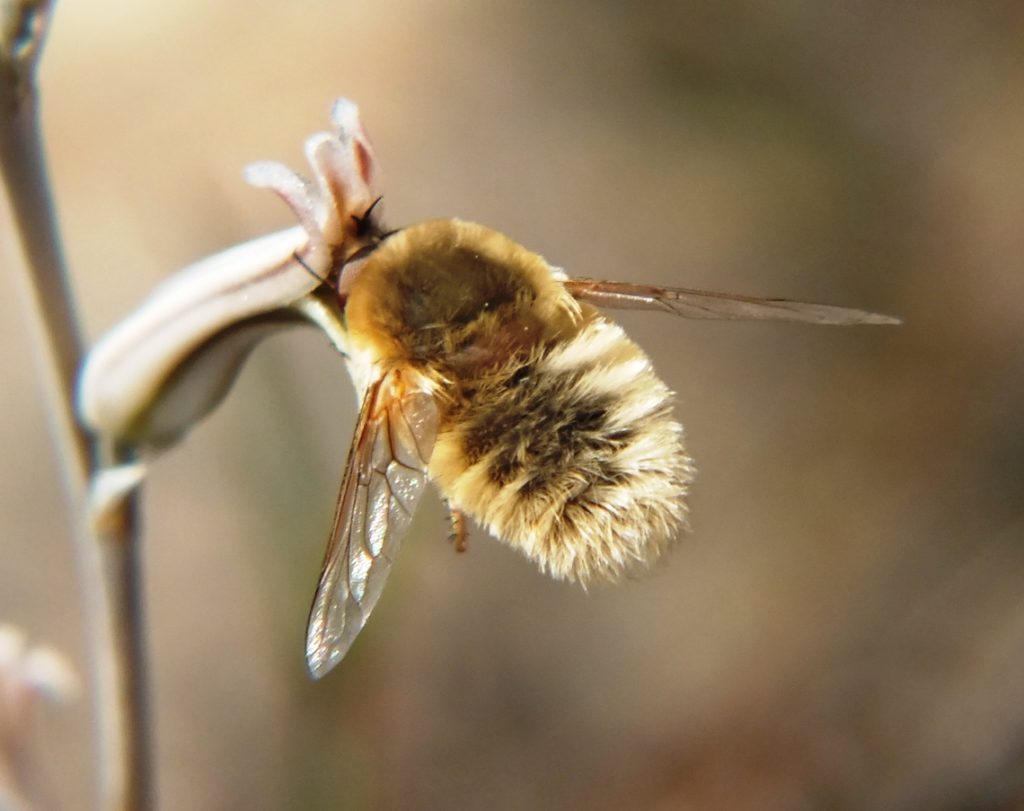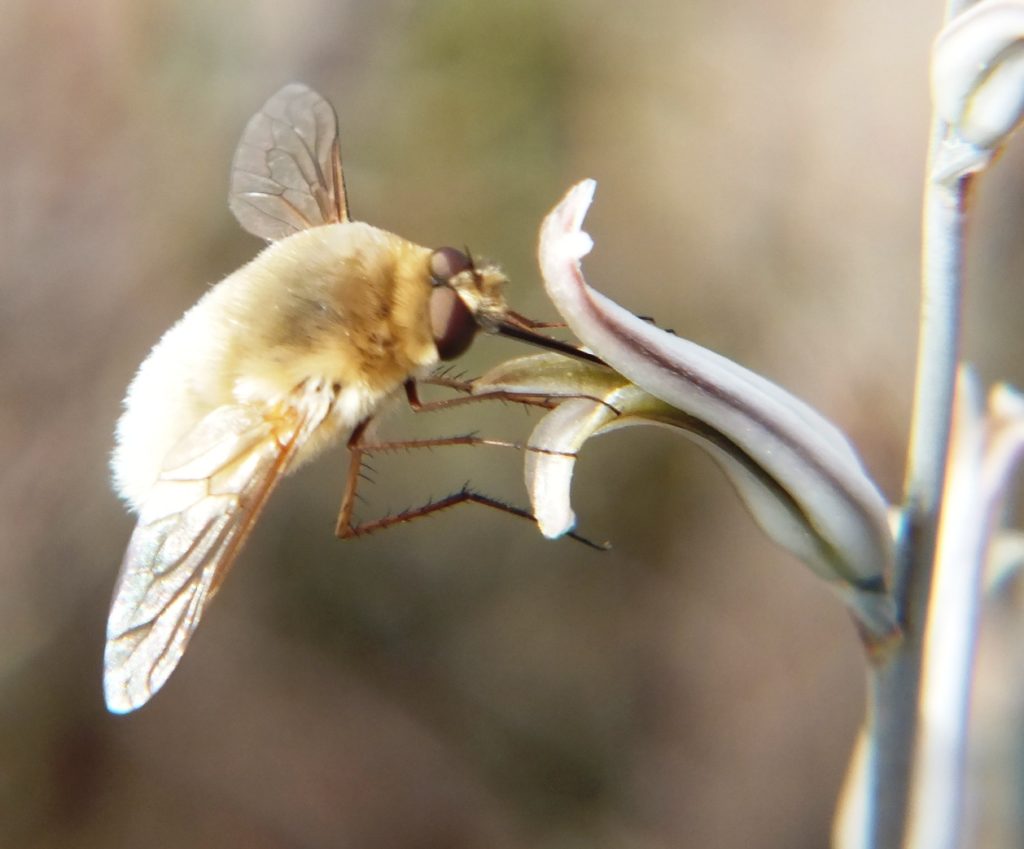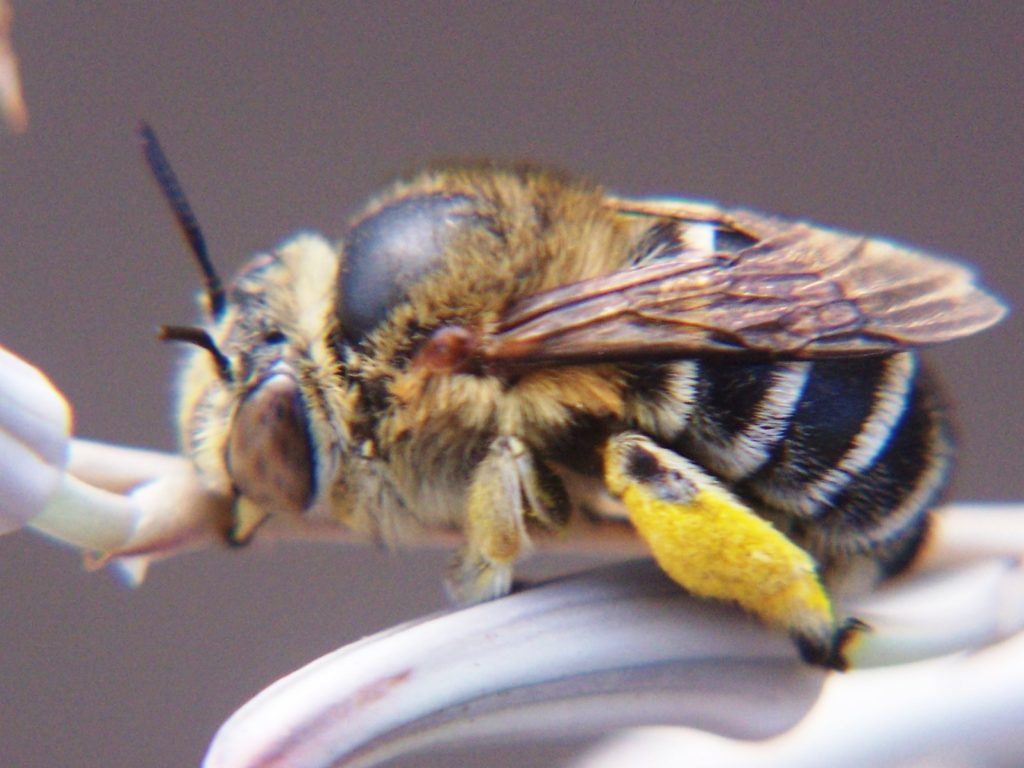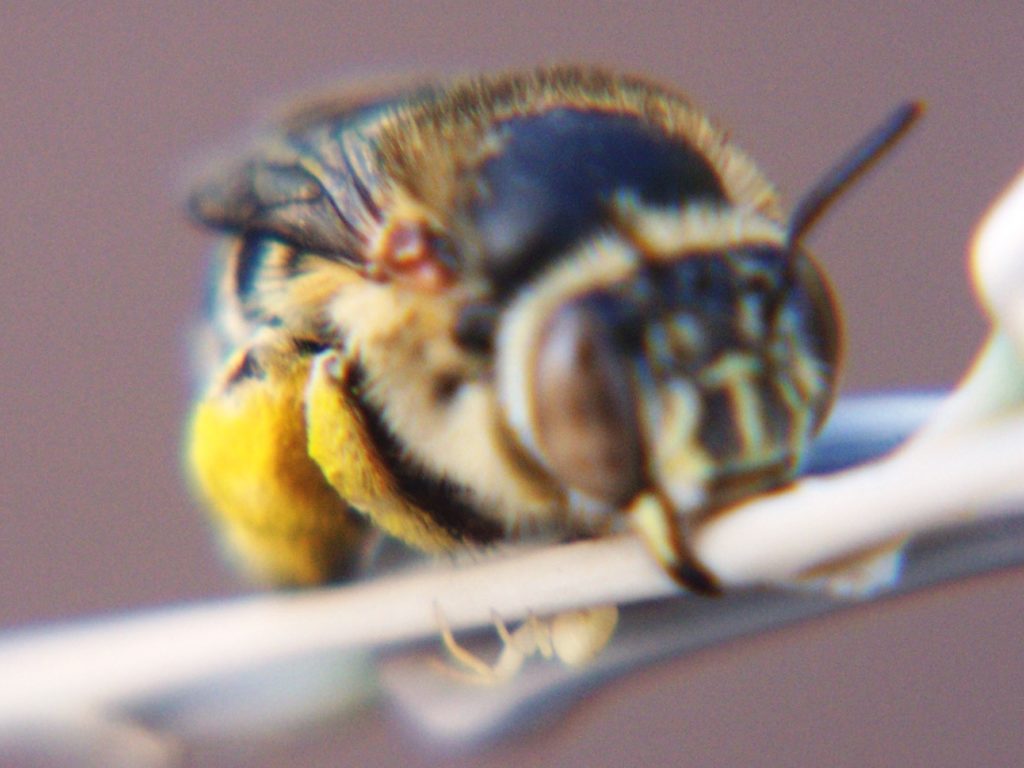While I have seen and recorded a Solitary Bee species pollinating the flowers of Haworthia, I have never succeeded in photographing this pollinator. Slightly larger than the ordinary Honey Bee, it is a very rapid and busy flyer and does not spend time at any one flower. Here in Cape Town it is relatively rare and there has been an odd season where I have not seen it at all. It makes a nest consisting of a short tunnel dug into the ground where it makes a series of nectar and pollen filled cells in which the eggs are laid. At Worcester these insects were very common and on one occasion I came across them nesting in large numbers in a small patch of bare gravelly clay. It is remarkable how they were obviously able to recognize and home in on their own small tunnels. It does come into relatively insect proof enclosures and can make isolation of plants for pollination difficult. It is unlikely that flying distance has been measured and it seems very unlikely that it will match the observed maximum of the Honey Bee at 13km (8miles). However, I do not know the length of the life cycle and the relation of the feeding/foraging activity to its nesting behavior. It may be possible that feeding but non-nesting bees disperse over greater distances.
The chance to take the two photographs presented here came quite by chance. I was in my plant house that is partly accessible to insects, and saw the bee on a Haworthia flower stalk. Its jaws were clamped on the peduncle and it was totally stationary. I took a few pictures and then attempted one from another angle. In doing so I had to dislodge a second peduncle from nearly under the bee. The slight difficulty in doing so did not register properly. I took a picture and then suddenly the bee came to life and flew off to resume foraging in the house. But it soon settled on another inflorescence (on a plant at another table) again on the peduncle with its jaws clamped on the talk as before. I removed some pollen coated threads hanging from its back legs and left. While downloading the pictures I saw that I had photographed a spider on the peduncle under the bee in my second angle. So went back to see. The bee was still stationary on the flower and then I saw what I thought was the same spider crawling over the bee. Somehow I disturbed the bee again and it flew off up into the shade cloth in seemingly healthy fashion. The next day I thought I would check the original peduncle to see if there was any web. Much to my surprise I saw the original spider and no web. I have seen these small yellowish spiders on flowers before and also noted small amounts of web. Very occasionally there have been dead flies sitting attached to the flower stalks but not with any noticeable web.
So it is still a bit of a mystery if this small spider, or spider pair, could actually capture and immobilize such a bigger potential prey. Certainly the bee I observed had encountered web and may have grasped the stalk to free its hind legs to work the web off. I did not observe anything more than minimal movement to do so.
Regarding pollination. I was not doing any controlled pollination during which I would have been checking for the presence and exclusion of the bee. But what I did observe was seed set on H. limifolia clones that I could not achieve although in desperation I have transferred pollen between different collections. The bee had an advantage in also bringing pollen from unrelated species. This was on H. limifolia ‘gigantea’ and on H. limifolia ‘glaucophylla’. While I have set a few capsules on the former, I have achieved none on the latter. What is interesting is that no seed was set on field collected clones of H. limifolia presumably ‘keithii’ from Isiteki.
During feeding/foraging, the bee holds onto the lower flower limbs and very briefly inserts its ‘tongue’ into the flower and buzzes away. I could not see any deliberate hovering and pollen transfer to the back legs as does the Honey Bee. But pollen is collected and carried in approximately the same way. When I hand-pollinate I adopt the simple approach of approximating the insertion of hair (bees ‘tongue’) into one flower to obtain pollen and then into another to deposit it. Better results are claimed for physically exposing the stigma and transferring pollen using a brush.
A recent trip to photograph flowers resulted in us finding H. floribunda southeast of the Bontebok Park at Swellendam. I have reported elsewhere that I had seen this species within the park but repeated visits had turned up nothing but similar looking H. mirabilis. On this occasion we were outside the park where we have recorded H. mutica, H. marginata, H. minima, and also similar small forms of H. mirabilis as occur inside the park. We explored a small area we had not covered before and were delighted to find H. floribunda, now easy to see because they were in flower. However, we proceeded to the H. mirabilis locality and on the way again found H. floribunda that we had missed on the previous visit. We also found more H. mirabilis about 60m further along and still about 100m away from the original H. mirabilis locality. These four species were along a stretch of about 5-600m and not occupying shared habitat. The vegetation was fynbos on shallow alluvium, quite stony and well-drained.
It was while photographing the flowers of H. floribunda that a furry fly appeared and ignoring us and the camera, attended to the flowers. While I was trying to get a picture of this fairly fast moving fly, the Anthophorid bee pollinator also appeared but flyng too fast and haphazardly to be pictured. We had seen the same fly on H. mutica at the Buffeljags habitat. The species is Australoechis hirtus known to be a pollinator and visitor to many flower kinds. The flies are nectar feeders and parasitize other insects in their reproductive process.
While we do not know what the pollinating effectiveness of these insects over distance is, it is quite obvious that in this situation there must be substantial transfer of pollen across all the species given the short distances involved. Three of the species were in flower. But H. marginata, curiously, at this locality flowers nearly 5 months earlier than at other known places. Despite that, there are hybrids with H. minima. There did not seem to be hybrids among the H. floribunda plants, but we did think that some of the plants of H. mirabilis could have been hybrid. ♦





The name of the fly is Australoechis hirtus